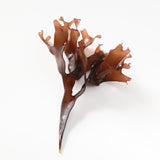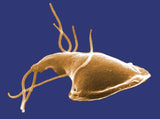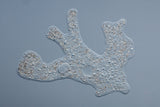What’s New in the Third Edition of Kingdoms of Life Connected? January 12 2023, 1 Comment
Last fall, I completed the third edition of my book, Kingdoms of Life Connected: A Teachers’ Guide to the Tree of Life. This came only six years after the second edition, which in turn came eight years after the first edition. “Why all this change?” you may ask.

I found that updates were needed because of changes in biologists’ view of the diversity of life. The data about how organisms are related continue to pour in, and because of this, the details of lineages and relationships change. You may be tempted to wait until the field stabilizes and stick with older ideas. Children, however, need a useful view of the diversity of life, even if it will be somewhat amended later. They cannot build on a foundation that is clearly obsolete. Specifically, it is no longer useful to present children with Five or Six Kingdoms, and those charts need to go in your history-of-science file.
I updated Kingdoms of Life Connected from cover to cover. I redid the lists of learning resources – books and websites; I purged links that no longer worked and added new ones. Publishers and authors have brought forth valuable new books in recent years, and I added titles to the lists while retaining older but useful books. I revised all the text, including the activities and lesson suggestions. I fact-checked the information to make sure it was as up to date as I could make it.
There is one especially important addition, a new lesson for introducing to the Tree of Life chart to beginning elementary children. This lesson gives older children important concepts as well, particularly if they have not yet had this overview. The introductory lesson leads children to the idea that all life shared a common ancestor and is connected. It shows them the relationships between the major branches of life. For example, they learn that the animals and fungi are sister lineages and that plants are only distantly related to fungi.
I’ll give a brief summary of some of the changes below. For more information, see the book, which is available at https://big-picture-science.myshopify.com/collections/biology/products/kingdoms-of-life-connected-third-edition (printed version). The ebook (pdf) is at https://big-picture-science.myshopify.com/collections/biology/products/kingdoms-of-life-connected-third-edition-ebook.
There are no big changes in the prokaryotes. I have kept a very basic approach because it takes extensive knowledge of biochemistry to understand the many branches of bacteria and archaea. Introductory college biology texts present a few basic lineages, and I felt that this approach would be good for children as well.
In the protists, I rearranged the Excavata lineage on the Tree of Life chart. Now, the euglenazoa and kinetoplastids are sister lineages and the metamonads are the first branch. I expect that Excavata will be split apart and redone in the future. It probably won’t be a eukaryotic supergroup, but studies continue to confirm the other supergroups – Archaeplastida, SAR, and Amorphea.
Scientific terminology evolves, and I was happy to see a complicated name go away. The branch of the stramenopiles and alveolates was previously called Chromalveolata, but that term has fallen out of favor. It originally described a lineage that included two branches I didn’t show, the cryptophytes and haptophytes; these are now placed elsewhere on the Tree of Life. The branch of the stramenopiles and alveolates may get a new name, but it seems best to leave that branch blank for now.
The fungi were the major branch that changed the most. The former Zygomycota lineage is now divided into two main lineages, the Mucoromycota and the Zoopagomycota. On my Tree of Life chart, I show the larger one, Murcoromycota. Its branches include the pin molds or Mucoromycotina (black bread mold, for example) and the arbuscular mycorrhiza fungi or Glomeromycotina (AM fungi). The AM fungi were previously placed on their own branch, but they have been added back to Mucoromycota. I didn’t add the Zoopagomycota to the Tree of Life chart, but if you have children who are interested in learning more, Fungarium by Katie Scott and Ester Gaya, is a good book for launching their explorations.
In the animal kingdom, studies have clarified some relationships in the protostome branch. You can give children the term “Spiralia” for the lineage previously called Lophotrochozoa. The whole branch is called Spiralia; “Lophotrochozoa” still refers to the mollusks and annelids. It is another of the situations where it is useful to know an older and newer term. “Lophotrochozoa” has been used for the Spiralia branch for about 20 years, and it appears in a number of websites. I recommend looking to the future and using “Spiralia” primarily. It is certainly easier to say and spell.
In the plant kingdom, studies have resolved several questions about the bryophytes. They are a single branch of life, a monophyletic lineage. The first branch was recently determined to be the hornworts. The mosses and liverworts are sister lineages. The older story was that the liverworts were the first branch because they do not have stomata. It appears that their ancestors lost their stomata rather than never having them.
The virus chapter now has suggestions for making a model of a coronavirus. I published this chapter as a stand-alone pdf in 2020. Note that if you have the third edition of Kingdoms of Life Connected, you already have the content of “What Is a Virus?”.
It is easy to become overwhelmed by all the names and branches of life. I recommend that you concentrate on the larger branches on the Tree of Life and continue to other branches as children (and you) learn about these and are interested in pursuing more. For in-depth studies at the elementary level, I recommend the digging further into the animal and plant kingdoms.
Start with the big overview of the Tree of Life. After that, my learning material, Sorting Branches on the Tree of Life: Vertebrates and Plants, is a good place to go. It is available as a pdf that you can print https://big-picture-science.myshopify.com/collections/biology/products/sorting-branches-on-the-tree-of-life-vertebrates-and-plants or as a printed material https://big-picture-science.myshopify.com/collections/biology/products/copy-of-sorting-branches-on-the-tree-of-life-vertebrates-and-plants-file-for-printing.

Enjoy your explorations of the Tree of Life!












